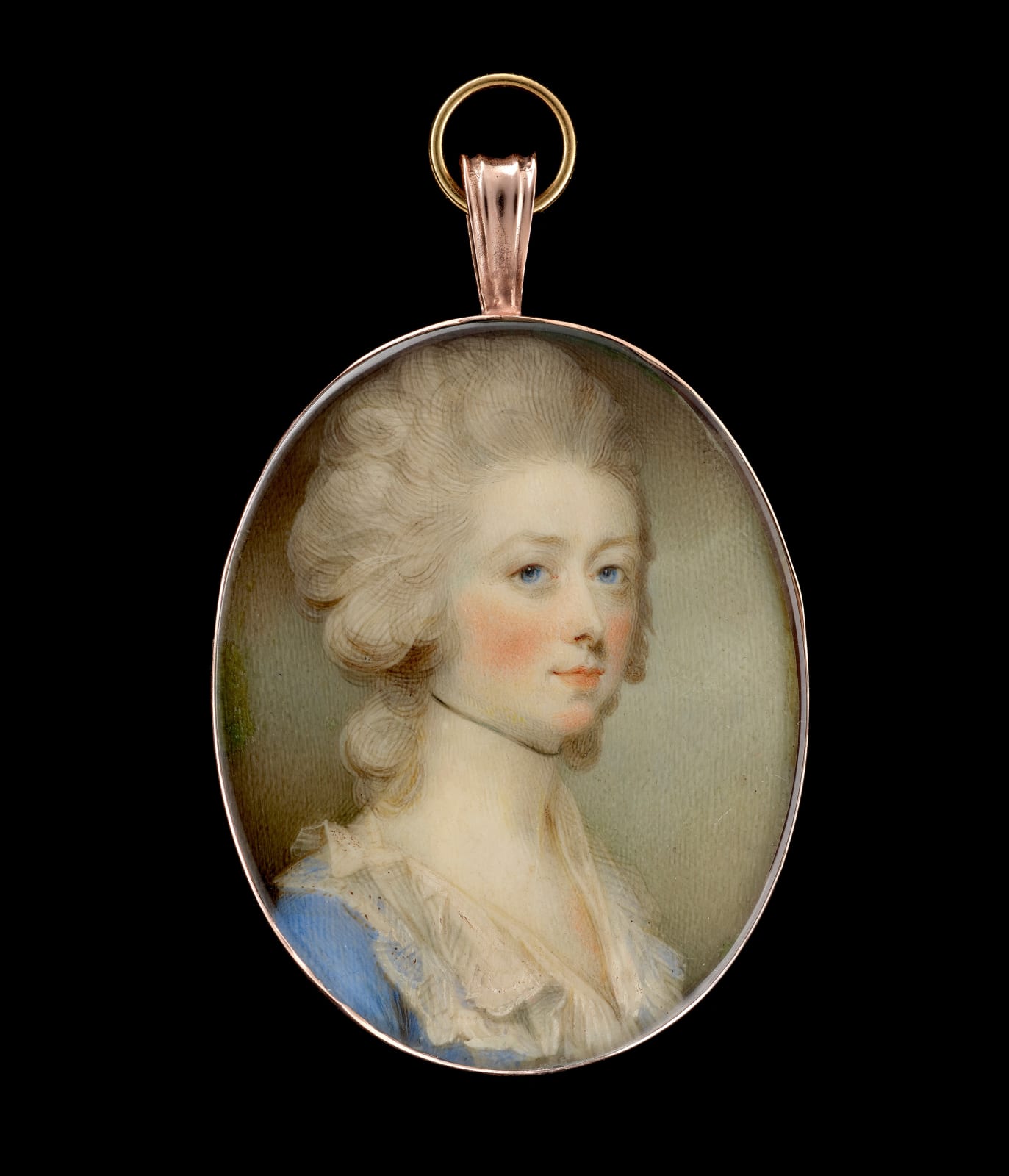
Jeremiah Meyer RA
A Lady, wearing a blue dress with white lace collar, a black ribbon at her neck, her hair powdered, c. 1782
Watercolour on ivory
Oval, 2 in (51mm) high
Philip Mould & Co.
To view all current artworks for sale visit philipmould.com Jeremiah Meyer was the oldest of a group of artists, including Richard Cosway, John Smart and Richard Crosse, all...
To view all current artworks for sale visit philipmould.com
Jeremiah Meyer was the oldest of a group of artists, including Richard Cosway, John Smart and Richard Crosse, all born around the same date, who took lessons at William Shipley 's new drawing school, the first such school in London. After his expensive apprenticeship with Zincke, it seems that he also spent time at the informal St. Martin's Lane 'Academy' run by William Hogarth.As one of the founder members of the Royal Academy, which opened in 1769, Meyer was one of a new generation of miniaturists who would present their art form in direct competition with oil painters. In 1764, Meyer was appointed miniature painter to Queen Charlotte and painter in enamel to King George III and a decade later, in 1774, one critic noted ‘[His] miniatures excell all others in pleasing Expression, Variety of Tints and Freedom of Execution’.[1]
Meyer painted many portraits for the young royal couple Queen Charlotte and her husband George III. He was responsible for enamel miniatures incorporated into a ring and bracelet given by the King to the Queen prior to their wedding in 1761. He continued to paint further portraits of the royal children which were exchanged as gifts between the couple. The present portrait, painted in the final decade of Meyer’s career, retains much of the freshness of his palette, unlike many of the faded larger portraits of this period. The masses of the sitter’s hair are typically painted in Meyer’s graphic strokes.
[1] J. Murdoch, J. Murrell, P.J. Noon and Roy Strong, The English Miniature, London, 1981, p.180 (originally quoted by Basil Long, in British Miniaturists, 1929)
Be the first to hear about our available artworks
* denotes required fields
We will process the personal data you have supplied in accordance with our privacy policy (available on request). You can unsubscribe or change your preferences at any time by clicking the link in our emails.